Top Things To Do In Tehran – Best Activities & Tourist Attractions
Top things to do in Tehran a city travellers love to hate, with many avoiding a stay here altogether en route to Iran’s more popular tourist destinations. But the more you discover, the capital’s gorgeous galleries, grand bazaar, sociable locals and tourist attractions together with exhilarating pace give it a beautiful side too.
No matter what – Tehran is a starting point for almost any tourist visiting Iran and because of this, Tehran tourist attractions and its gorgeous museums, cafe scenes, shopping center and chilling oasis will give you a different prospective, so, lets find out what are the best things to do in Tehran, Iran .
There are lots of things to do, countless activities & attractions to enjoy, said a local taxi driver in Tehran

Don’t skip Tehran’s unmissable sights
Tehran’s a city most organized tours dispose of in a day or two with a quick visit to the crowded and some of its historic attractions such as a 18th century Golestan palace garden- bling-choked Jewelry Museum, a glimpse of the Azadi Tower, and a stop at one of the former Shah’s flashily opulent palaces. After we visited eleven museums, six art galleries, and three bazaars—along with taking two mountain trips, going to the cinema once, and enjoying a memorable night with a Tehrani family—I’m glad we persevered.
Explore Ancient Persia your Way → Best Deal Iran tours
Tourist Attractions & Top things to do in Tehran
Golestan palace complex | Address: Ark Sq

Visiting Golestan palace – in what was once the heart of Tehran, is this must-see attraction monument to the glories and excesses of the Qajar rulers. A short walk south from Imam Khomeini Sq, made up of several grand buildings set around a carefully manicured Persian gardens. Admission isn’t expensive but, annoyingly, you must buy a separate ticket for each building, and all at the front gate. If you ask, they might also give you an informative printed guide.
Although there was a Safavid-era citadel on this site, it was the Qajar ruler Nasser al-Din Shah (r 1848-96), impressed by what he’d seen of European palaces, who built it into the fine complex you see today. Originally, it would have been much larger, with inner and outer sections designed to include offices, ministries, and private living quarters. However, the Pahlavis demolished several surrounding buildings.
The following tour of Golestan Palace Complex, assumes you start your visit at the Ivan-e Takht-e Marmar, then continue clockwise around the courtyard. Walk straight ahead from the entrance to the Ivan-e Takht-e Marmar, a mirrored, open-fronted audience hall.
After here turn left and you’ll come to the Negar Khane, which displays a fine collection of Qajar-era art. Continue clockwise and you’ll come to the Howze Khaneh , named for the small pool and fountain in the room. At the end of the garden is the imposing Shams-Al Emarat , the tallest palace of its day.
Next door you’ll find the restored Emarat-e Badgir, first erected in the reign of Fath Ali Shah. Next up is the tiny Talar-e Almas which displays a range of decorative arts. Finally, after wandering back through the gardens, you’ll come to the Ethnographical Museum, back near the main entrance.
Sa’d Abad palace & Museum Complex | Address: Valiasr Ave, Taheri St

Set on 104 hectares of spectacular mountainside parkland, the Sa’d Abad palace Complex is one of the best tourist attractions in Tehran – the palace was a royal summer home during the Pahlavi period. The site’s 18 buildings house museums dedicated to subjects as diverse as the royal dishware, royal automobiles and miniature paintings. To see everything you’ll need at least three hours. Having lunch at nearby Darband and then entering from the north entrance makes sense and your thighs will thank you. Here are different building in same complex, decide where to visit and buy the ticket at the entrance.
White Palace
Palace of the Nation or the White Palace was built between 1931 and 1937 and served as the Pahlavi summer residence. The two bronze boots outside are all that remain of a giant statue of Reza Shah – he got the chop after the revolution.
Most of what you see in the 5000-sq-metre, 54-room palace dates from Mohammad Reza Shah’s reign (1942–79) and little has changed since the revolution. The modern building contains a mix of extravagant furnishings, paintings, a tiger pelt, and large, custom-made carpets. It was the height of luxury in its day, with discreet air-conditioning units that fold away into the walls.
In the upstairs Ceremony Hall, you will find a 143-square-metre carpet, which experts consider one of the largest ever woven in Iran. The nearby Dining Hall also features a similar carpet. Here, the shah, suspecting that someone had bugged the palace, dragged a table into the middle of the room and insisted that both he and the American general he was entertaining climb on top before they spoke. Don’t miss the trippy stainless-steel staircases at the back of the ground floor, which spiral down to the Nation’s Art Museum in the basement.
Green palace
Shahvand Palace stood at the uphill end of the complex. The more classical-looking Green Palace, built at the end of the Qajar era, underwent extensive remodelling by the Pahlavis. Reza Shah lived here for only a year and apparently found the bed, if not the mirror stalactites on the ceiling, a little too soft – he slept on the floor instead. Later, they used it as a private reception hall upstairs and a residence downstairs for special guests. The design is over-the-top opulent, with wall-to-wall mirrors in the appropriately named Mirror Hall and the bedroom. Be sure to take in the view from the back and this going to be a best photo including your sightseeing day in Tehran.
Other Museums & Galleries
The most interesting of the remaining museums include: the Royal Automobile Museum , with its Rolls Royce, Cadillac and a ‘unique’ armoured Mercedes Benz 600; the expansive Museum of Fine Arts in a building near the front gate that served as the royal court between 1968 and 1979 and now exhibits furniture and paintings by modern and older Iranian artists, plus Western painters including Salvador Dali; the Royal Dishware Museum as much for the faux-French architecture as the ornate plates; and the Military Museum set inside and around another palace that belonged to the shah’s nephew Shahram – just look for the helicopter.
Shop antique & explore Tehran Grand Bazaar | Address: Panzdah Khordad SQ

The Tehran Grand Bazaar ranks among the most significant in Iran and stands as the country’s most important economic complex. Situated in the historic district of Tehran at Panzdeh Khordad Square, this Bazaar, a relic of the Qajar era, attracts both domestic and international tourists with its unique maze of alleyways.
Moreover, the Tehran Bazaar offers an excellent unique handicrafts, carpets and whatever you mean to buy, you can find it here. The Grand Bazaar blend of Persian-style bazaar, such as Sara & Timcheh, among all of them, the most famous ones including Saraye Mahdiey, Timche-ye-Hajeb o Dowle. And, if you get your way to visit the Bazaar and it’s surrounding historic attractions, such as the Golestan Palace, expect to spend a full day. In addition, there are few half- a century old restaurants serving classic Iranian dishes, try them!
And, to shop antique and unique Persian goods, carpets, souvenirs and other handicrafts, remember that prices aren’t always fix, haggling on shopping, is part of the daily life in Iran, two third of the offer you receive would be an ideal price to buy anything you want (Excluding foods, fruits). The final price you pay is always depend on your negotiating skill.
Treasury of National Jewels | Address: Ferdosi St
One of the top 3 must-see attractions in Tehran – that alone says it all. The national Jewelry museum of Iran control by the national bank (central) and is probably Tehran’s biggest things to do. If you’ve already visited the art gallery at the Golestan Palace, you will have seen paintings or photos showing the incredible jewellery with which the Safavid and Qajar monarchs adorned themselves. Come here to see at the real things.
Important stones & national jewels
Most of the collection dates back to Safavid times, when the shahs scoured Europe, India and the lands of the Ottoman Empire for booty with which to decorate their capital, Esfahan.
But as the Safavid empire crumbled, the jewels became a high profile spoil of conflict. When Mahmud Afghan invaded Iran in 1722, he plundered the treasury and sent its contents to India.
On ascending the throne in 1736, Nader Shah Afshar despatched courtiers to ask for the return of the jewels. When their powers of persuasion proved unequal to the task, he sent an army to prove that he meant that and he was more than serious. To get soldiers away, Mohammed Shah of India had to surrender the Darya-ye Nur and Kuh-e Nur diamonds, a Peacock Throne, and various other treasures.
After Nader Shah’s murder in 1747, Ahmed Beg plundered the treasury and dispersed the jewels. The Kuh-e Nur, the world’s largest cut diamond, ended up in the hands of the colonial British and has remained locked in the Tower of London since.
National jewels during Qajar & Pahlavi times
The Qajar and Pahlavi rulers enthusiastically expanded the jewels collection, making it so valuable that, in the 1930s, they transferred it to the National Bank of Iran (now the Central Bank of Iran) as a reserve for the national currency.
Make sure you don’t miss the Darya-ye Nur (Sea of Light), a pink diamond weighing 182 carats and considered the largest uncut diamond in the world; the Peacock (Naderi) Throne outside the lofty door; the tall Kiani Crown, made for Fath Ali Shah in 1797; the crowns worn by the last shah and his wife, Farah; and the incredible 34kg Globe of Jewels, crafted in 1869 with 51,366 precious stones.
Cameras, phones, bags and guidebooks must be at reception. Be careful not to touch anything – this is only a museum of see and learn, nothing more.
National Museum of Iran | Address: Si Tir St

The National Museum of Iran, offers a comprehensive flash-back to Iran’s rich history and should be included on every visitor’s list of things to do in Tehran. You will likely find the exhibits more meaningful if you visit after exploring the main archaeological sites, such as Persepolis, or Ziggurat, so if you can, consider scheduling your visit towards the end of your trip.
Museum features a remarkable collection of ceramics, pottery, stone figures, and carvings, primarily from excavations at Persepolis, Ismail Abad (near Qazvin), Susa valley, Rey, and Turanj Tappeh. While this museum is a must-see tourist attraction on list of things to do in Tehran, English labels are provided and an English-speaking guide is available.
Among the exhibits from Shush, you will find a stone capital featuring a winged lion, charming pitchers and vessels shaped like animals, and colorful glazed bricks adorned with double-winged mythical creatures. Additionally, the museum displays a replica of the stone detailing the Code of Hammurabi found at Shush, with the original one places in Paris.
This museum, a not to miss tourist attraction, offers these fascinating pieces of ancient history of Iran and a part of the essential things to do in Tehran.
Former American Embassy | Address: Taleqani St
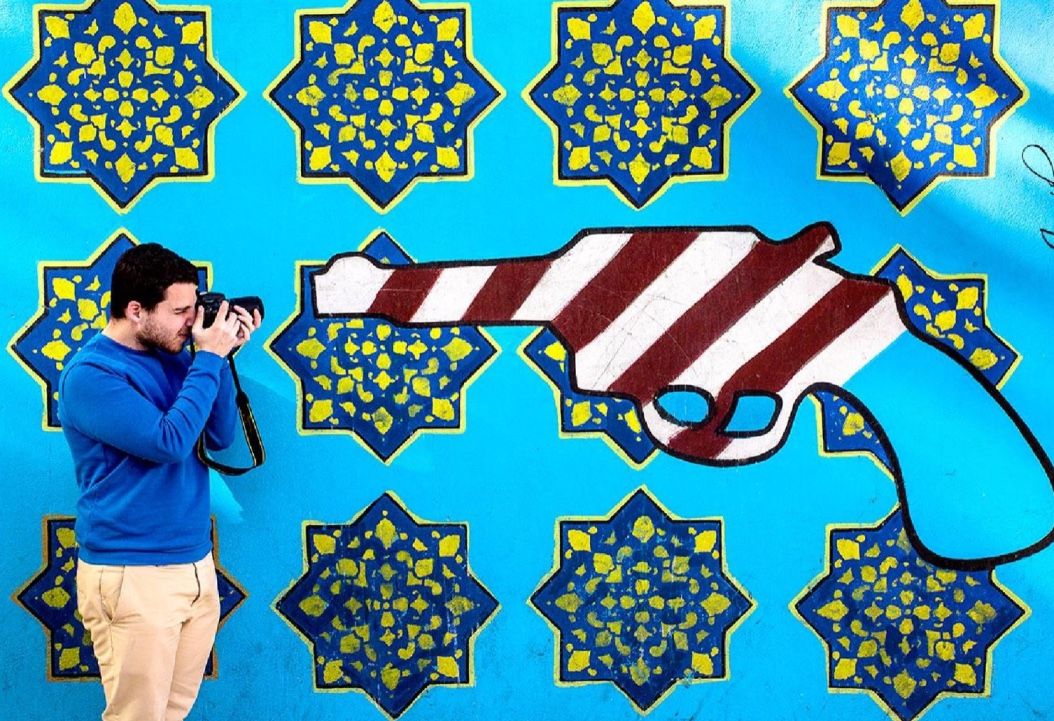
Stepping back in time, the former American Embassy in Tehran has it’s own black and white story. Located in Taleqani street right out of the subway, you’ll see the walls of what is called “US Den of Espionage” and opened as a Museum of 13th Aban.
Following the 1979 Revolution, the Americans were officially expelled from Iran. Shortly after the revolution, a group of revolutionary students seized 52 diplomats and held them hostage within the embassy for up to 444 days before releasing in 1981.
Today, the former American embassy has been transformed into a museum that aims to illustrate the ways in which the US has used espionage to intervene in the affairs of Iran and other sovereign nations.
The US former embassy museum stands out as one of the more unusual attractions and activities in Tehran.
Azadi Sports Stadium | Address: Off Karaj Hwy, Azadi Sq

Part of the Shah’s plan to modernize Iran, opened official on Oct.17th.1971. Iran’s favourite sport is football (soccer), which is played at several smaller stadiums and the giant-sized, 100,000-capacity Azadi Sports Stadium. Matches are normally played on Thursdays and Fridays but to find out where, your best bet is to ask your friend in Tehran.
If you can make it to the big Tehran derby between Esteqlal and Persepolis, do – assuming you are part of the big crowd who love them to death. If you made it to watch the derby, wear blue for Esteqlal, or go red for Persepolis.
Looking for Top Things To Do In Tehran [2025]Once you done with Best & Unique sightseeing – It’s now time to explore Tehran’s Top museums & art galleries. |
Glass and Ceramics Museum | Address: Si Tir St
This Tehran’s Museum showcase stunning artifacts from the 2nd millennium BC onwards, beautifully displayed and annotated. Try to visit early and you are the only visitors which meant you could ooh and aah without embarrassment.
Housed in a beautiful Qajar-era building a short walk north of the National Museum of Iran, the Tehran Glass & Ceramics Museum is, like many of its exhibits, small but perfectly formed.
Built as a private residence for a prominent Persian family, it later housed the Egyptian embassy and was converted into a museum in 1976. Unusually for its time, the building successfully blends features of Eastern and Western styles. The graceful wooden staircase and classical stucco mouldings are particularly delightful, and there are many delicate carvings and decorative flourishes.
The well-designed museum stands out in a country where detailed explanations are hard to find. It has hundreds of exhibits, mainly from Neishabur, Kashan, Rey and Gorgan, dating from the 2nd millennium BC to the modern day. The galleries walk you chronologically through the ages, with detailed, lucid explanations in English that chart the history of the country and the region through the lovingly displayed glass and ceramics that remain.
Reza Abbasi Museum | Address: 892 Shariati Ave
The exhibits, starting from around 2000BC, are without exception quite exquisite – especially the gold work – and as few people seem to visit, you might have it entirely to yourself.
Named after one of the great artists of the Safavid period, the Reza Abbasi Museum of Tehran showcases Iranian art from ancient times and the Safavid-era paintings of Abbasi himself. If you like Iranian art, it’s one of the best and most professionally run museums in the country.
The exhibits start chronologically with the top-floor Pre-Islamic Gallery. There, you’ll find Achaemenid gold bowls, drinking vessels, armlets, and decorative pieces, often featuring exquisite carvings of bulls and rams. Here, too, you’ll find fine examples of Lorestan bronzes . The middle-floor Islamic Gallery exhibits ceramics, fabrics and brassware, while the ground-floor Painting Gallery shows samples of fine calligraphy from ancient Qurans and illustrated manuscripts, particularly copies of Ferdosi’s Shahnamah and Sa’di’s Golestan.
To reach the museum take Metro Line 1 to Shahid Hemmat and then a shuttle taxi down the Resalat Expressway to the junction with Shariati Ave.

Carpet Museum of Iran | Address: Corner of Fatemi & Kargar Aves
Look out for two enormous carpets depicting Napoleon and see if you can spot the difference in his portrayal. The carpets are beautiful but unlike its Turkish equivalent in Istanbul, this museum’s signage isn’t great.
Just north of the Museum of Contemporary Art, the Carpet Museum houses more than 100 pieces dating from the 17th century to the present day. It’s a great place to see the full range of regional patterns and styles found in Iran, plus a few unique carpets such as the Tree of Life with Kings and Notables. The permanent collection is downstairs while upstairs is for temporary exhibitions.
Queen Farah Diba designed the museum, blending classic ‘70s style with carpet-inspired functionality. The exterior resembles threads on a loom and cools the main building by casting shadows on its walls. The museum prohibits flash photography.
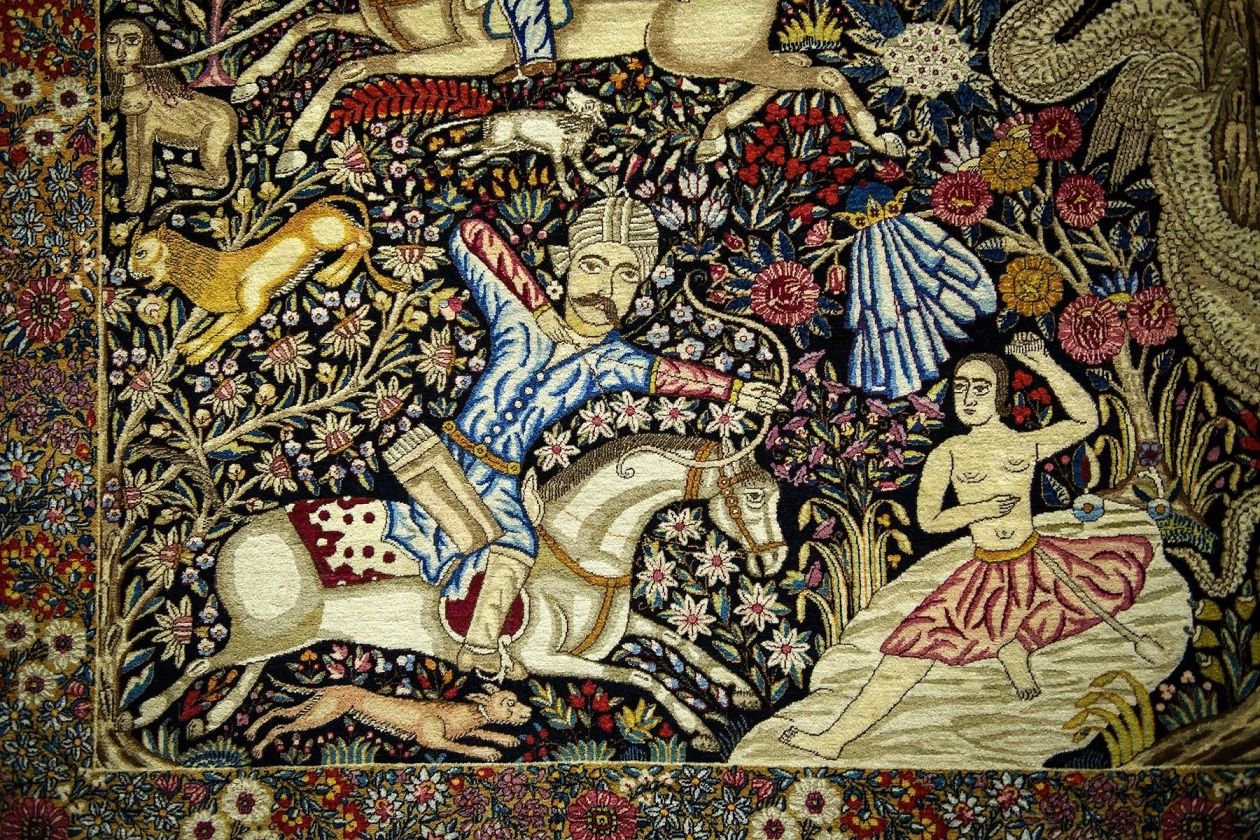
Is Tehran a safe city to visit as a tourist?
Safety in Tehran – How Safe is Iran’s capital for Travel? If you’re one of those visitors who follow and listen to the western media and whatever they’re talking about Tehran, you probably will never end of to travel in Iran and Tehran. All those politics & news aside, Tehran, as well as Iran, is relatively safe and remained low in crime, specially against tourists. Friendly hospitable locals make up for a grubby tangle of a town.
Some of the safety tips including: Money changing, this is due to the inflation, exchanging money to IRR will make you a millionaire within a minute, so, in order to avoid confusing, take a little more time and count whatever you received from the money-changer and remember to always change money in an office (Exchange offices) rather than changing them from the de-facto guys walking around asking for “Exchange Dollar”.
Again, Tehran and Iran, is relatively safe and low in any sort of crimes, be a genuine tourist and leave in the same way.
And you’re all good and bring a Single female travelers may attract some more attention from the Iranian male – nothing to worry in general since people in Iran are very friendly and polite, to which, this makes some female visitors feel not that comfortable. So, if you’re feeling something may not be norma, just say you’re a married lady and that’s it. Check out Dress Code & What to wear in Iran
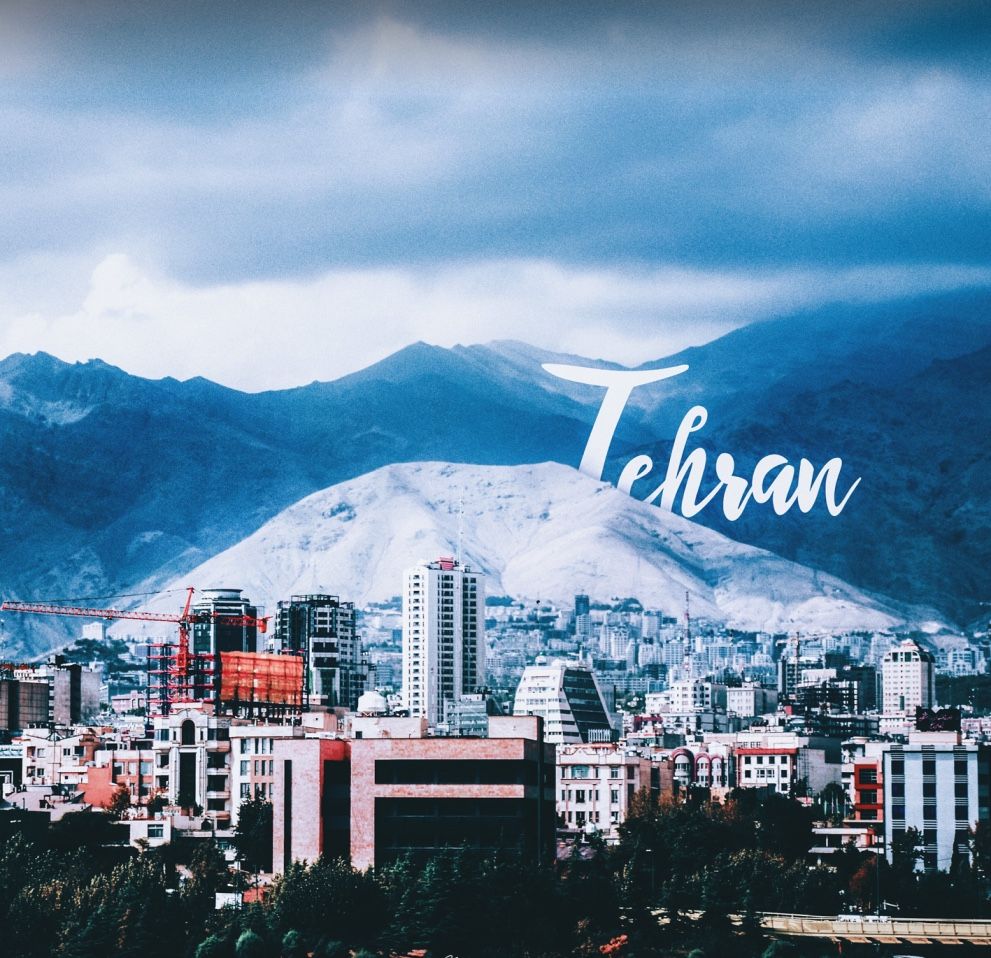
Weather overview → Best Time to Visit Tehran
Unlike much of Iran, Tehran’s weather is colder in winter. Summers in Tehran are dry and hot. An average annual rainfall of 200mm falls mainly across the chilly winter months of November to January when temperatures can plunge below 0°C (32°F), sometimes bringing snow.
Tehran’s winter days, however, are often cold. February can still be quite wet, but by March, the weather begins to chill, leading to warmer days. By mid-May, Tehran heats up again. Check out Best Time To Visit Iran
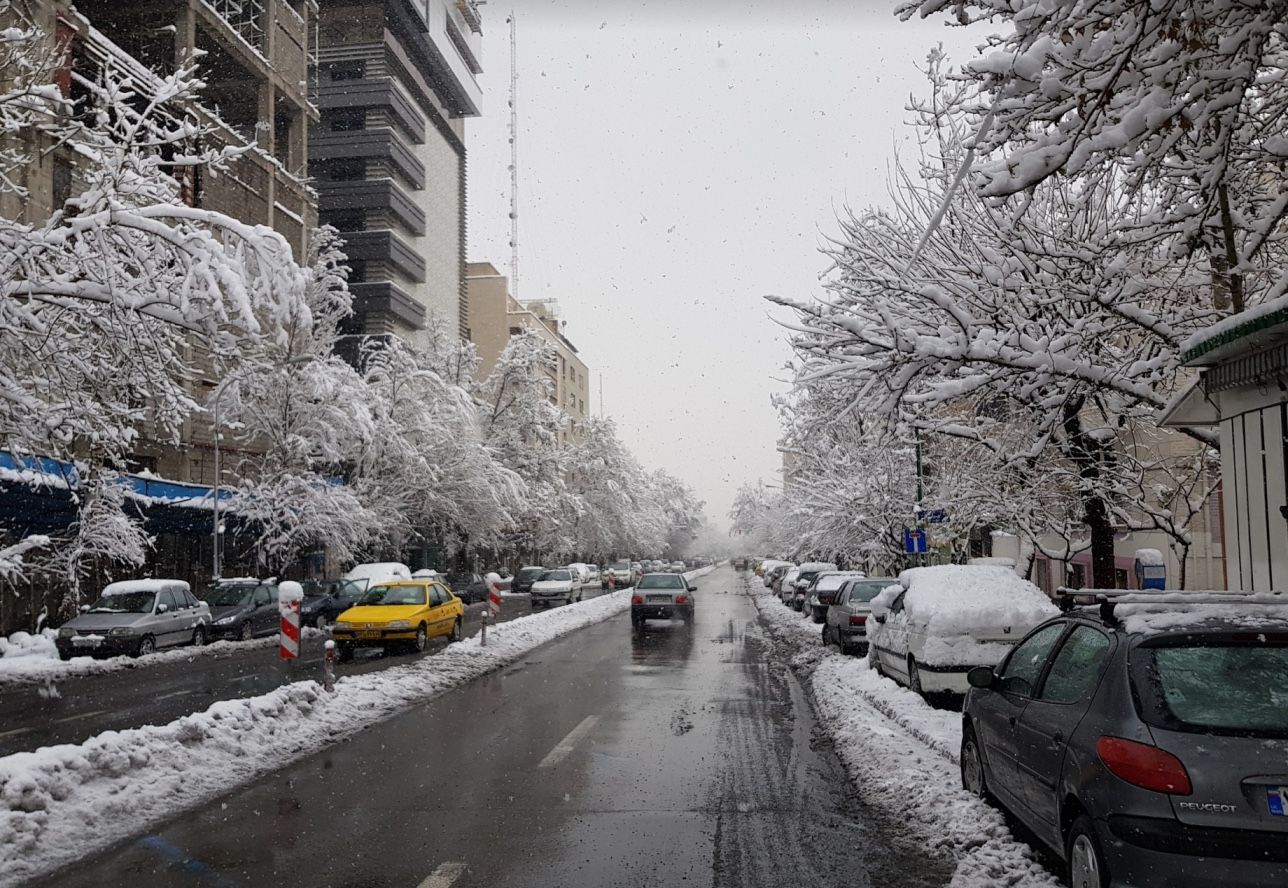
Things To Do in Tehran at NightHow to spend a night in Tehran? Away from bar scenes and nightlife with flashy dance club and discos, local Tehrani know how to have fun without booze involved – Here are few things to do in Tehran, Iran by night! |
See Tehran by night at Darakeh & Darband
On a sunny day few things could be nicer than fleeing the traffic fumes for the foothills of the Alborz Mountains and the walking trails of Darakeh and Darband. Both the trails strike north, passing waterfalls and crossing streams. They are crowded on Thursday afternoon and Friday and make a great place to meet Tehranis in a relaxed, social atmosphere. The trails to walk up are now a place for restaurants by the stream offering some of the classic Iranian foods in a chill atmosphere.
For those interested in trekking & hiking while in Tehran, follow the waterfalls passing by all the restaurants to reach the Palangan up to Tochal peak.

Spend the evening meet locals at chicest cafés in Tehran
In Tehran, Coffee-shops & tea-houses are growing like nowhere else in Iran – whether it’s an evening what to do you’re after or a cosy spot to unwind and try tea and coffee in Tehran, then you’re not in a lack of places to go. Locals in Tehran prefer to meet at night and if you have met some of them during your stay in the city, then what better way to meet them at night at one of the local cafes around the capital city.
The youth in Tehran are well educated and can talk under the wet-cement, about sport, love, politics and other countries, just pretty much anything. Meet & grab a tea or coffee would be a significant highlight of Tehran things to do by night. In addition to coffee, almost any shops you visit, offer a wide selection of teas and a quick eat such as Ash (noodle veggie soup & chickpea ).

Walk up to Tabiat Bridge at night
If you’re looking for something more romantic for after dinner hours, let’s take a walk up through the Tabiat Bridge [literally means Nature bridge].
The Nature Bridge stands as a new symbol of Tehran linking Taleghani Park to Water & Fire parkland, and is situated along Modares Highway. Walking across the Tabiat bridge offers a stunning view over Tehran and provides an excellent opportunity for Instagram snaps and selfies.
Visiting the 3 story Nature Bridge at night has become one of the must-do for locals in Tehran, the areas around the bridge hosts popular gathering spot for young people and families – in addition, the bridge has been designed to lit-up beautiful mixture of lights during the evening.
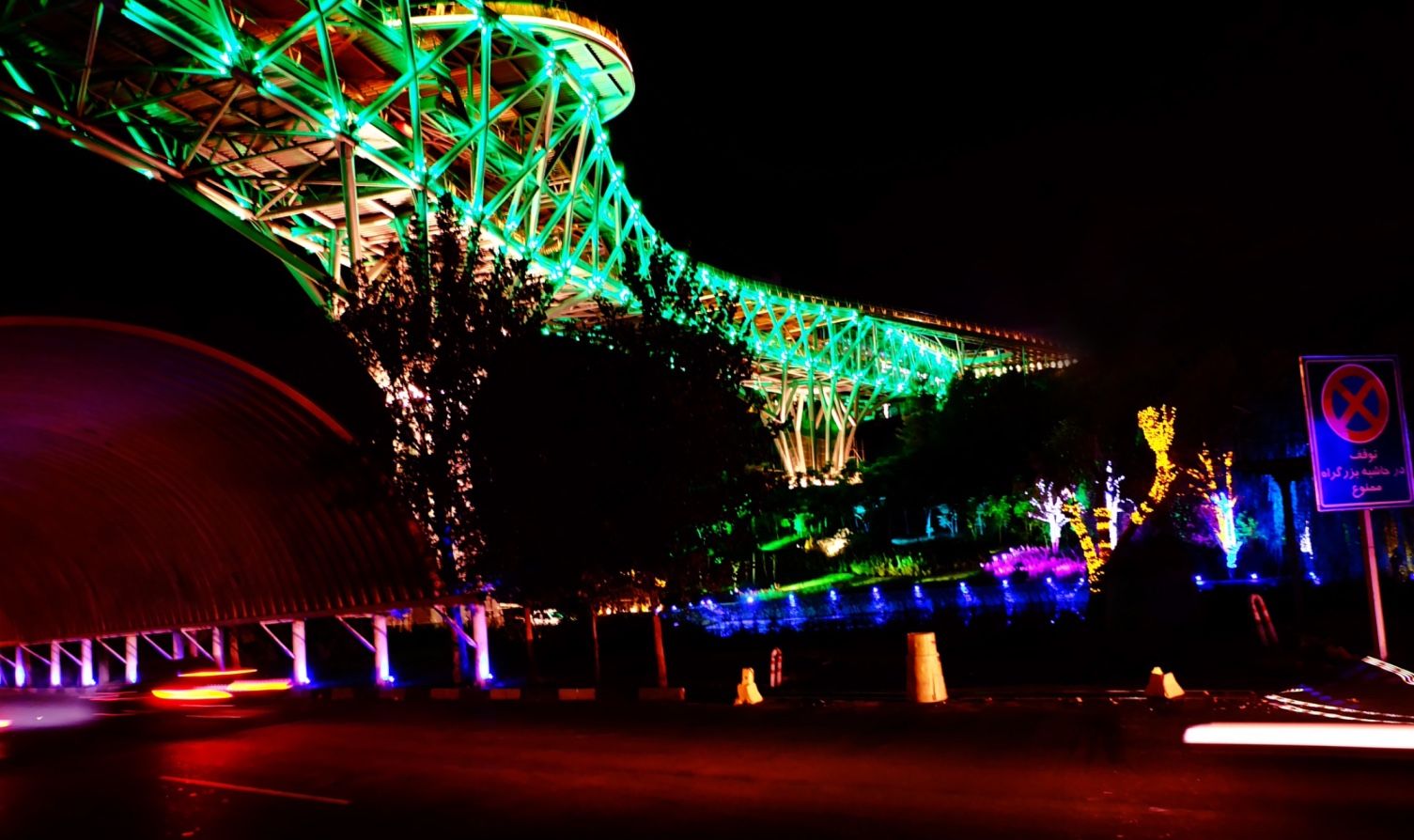
Dine out at 435meter height on top of Milad Tower
The Revolving Restaurant located at Milad Tower, at height of 435 meter. If luxury dining is your thing, then this is a place to go at evening for dinner in Tehran. This venue features a luxurious and modern ambience, with elegantly designed, comfortable furnishings, making it an ideal place for both business and social meetings, as well as important gatherings.
The restaurant accommodates up to 300 guests and it revolve once every hour allowing diners to enjoy a panoramic 360-degree view of great Tehran while enjoy the magnificent dinner. The Revolving Restaurant serves breakfast, lunch, and dinner, all of which are offered in an open buffet. Don’t forget to get an Islamic beer or two 🙂
The menu includes an extensive selection of Iranian, seafood, and international dishes. For lunch and dinner, patrons can choose from rice dishes, stews, pizza, pasta, and more. As one of the busiest restaurants in Tehran, reservations are strongly recommended for dinner to ensure availability.

Experience Best Free Things to do in TehranThe name “Tehran”, reflects museums, historic tourist attractions & for many, a city to stay a bit longer – Iran’s capital city is remarkable for its unique Free Things to Do. Luckily, tourists still get a great taste of Tehran’s culture & excitement without having to spend a fortune. Here are few free things to do in Tehran that’ll help you save some money, while enjoy the vibe. |
Visit Y-Shaped Azadi Tower | Address: Azadi Sq
Way out west at the end of Azadi Ave is the inverted Y-shaped Azadi Tower, built to commemorate the 2500th anniversary of the Persian Empire in 1971. After being closed for years, the underground gallery, Quran museum, cinema and, best of all, the viewing platform finally reopened in 2006.
Like the City Theatre, Carpet Museum and Tehran Museum of Contemporary Art, the 50m-high structure is a mix of ’60s-era modern architecture with traditional Iranian influences, such as the iwan -style of the arch making it one of the best free things to do & to see in Tehran, Iran.
The exterior is clad with more than 8000 cut stones, while inside you can see architect Hossein Amanat’s complex structural engineering in concrete. The park surrounding the Azadi Tower is a relative oasis compared with the surrounding city’s on the go. The monument was the scene of much protest during the 1979 revolution and remains a focal point. You can reach the top by stairs or lift, and will probably be accompanied. To get here, take a bus, metro or shuttle taxi west and ask for ‘Azadi’ or take Metro line 2 (dark blue) to Azadi and walk from there.

Tehran university tour together with students
A very good way to learn about culture, education and student life and beyond that, visit Iran’s best university with a local student. To do that, just drop by the university, befriend with eagerly smiling helpful students and thats all you need. Remember to bring your passport as they request to see it, and thats it – get inside the university and learn more about what is know for the first center of higher education, found in 1934 in Tehran. The university now in 2025 encircles 9 campuses, 25 faculties and several high level research centers.
Fun things to do in Tehran with kids
Tehran and generally Iran, loved by families and kids, this enough says it all that Tehran is a kids-friendly city. Everywhere you travel in the city, you’ll see families and kids, parks and other recreation areas for the kids to play and enjoy. Traffic aside, but trust me, Tehran is a place for kids. Here are top 10 things to do & places to go in Tehran for families with kids.
1: Tajrish Bazaar
2: Niyavaran palace complex
3: Milad Tower with kids play zone
4: Touchal tele-cabin & ski slope
5: Valiasr street
6: Iran-mall shopping center
7: Jamshidiye Parkland
8: Tehran botanical garden
9: Bird Garden – A TOP pick for kids
10: Tehran book-garden for kids
4 Ski Activities & Things to Do in Tehran in Winter
Tehran offers some of the best yet exciting activities to do, if you are a fan of roads trips, hiking and specially looking for a ski experience while in Iran, then here are our top 4 ski experience and exciting things to do while in Tehran:
1: Dizin Ski Resort | Hours: 8.30am-3.30pm Dec-Apr
Considered a good day trip option from Tehran – The largest field in Iran and home to Iranian skiing, Dizin Resort, The runs aren’t difficult. Still, with a vertical drop of about 900m it should appeal to anyone feeling the need for speed. With base camp at about 2700m and the upper slopes about 3500m, skiing is usually possible from December until April. From the base, you take an antique-looking gondola to the mid-station, and another to the top. A third gondola ferries you to the eastern slopes.
2: Shemshak Resort | Hours: 8.30am-3.30pm Jan-Mar
Shemshak Resort has the slopes that will get hardcore skiers most excited. There are six lifts, the longest being about 1450m with a vertical descent of about 500m (some of it at an adrenalin-inducing 45-degree angle) and plenty of moguls. Snowboards are welcome. Boots, skis and poles can be hired for small amount per day.
3: Tochal | Hours: 8.30am-3.30pm
The slopes and resort at Tochal are accessed via the Tochal Telecabin in northern Tehran and its often combined with a visit to Darakeh and or Darband.
4: Darbandsar | Hours: 8.30am-3.30pm Jan-Mar
Darbansar, has three easy slopes and is best for beginners.
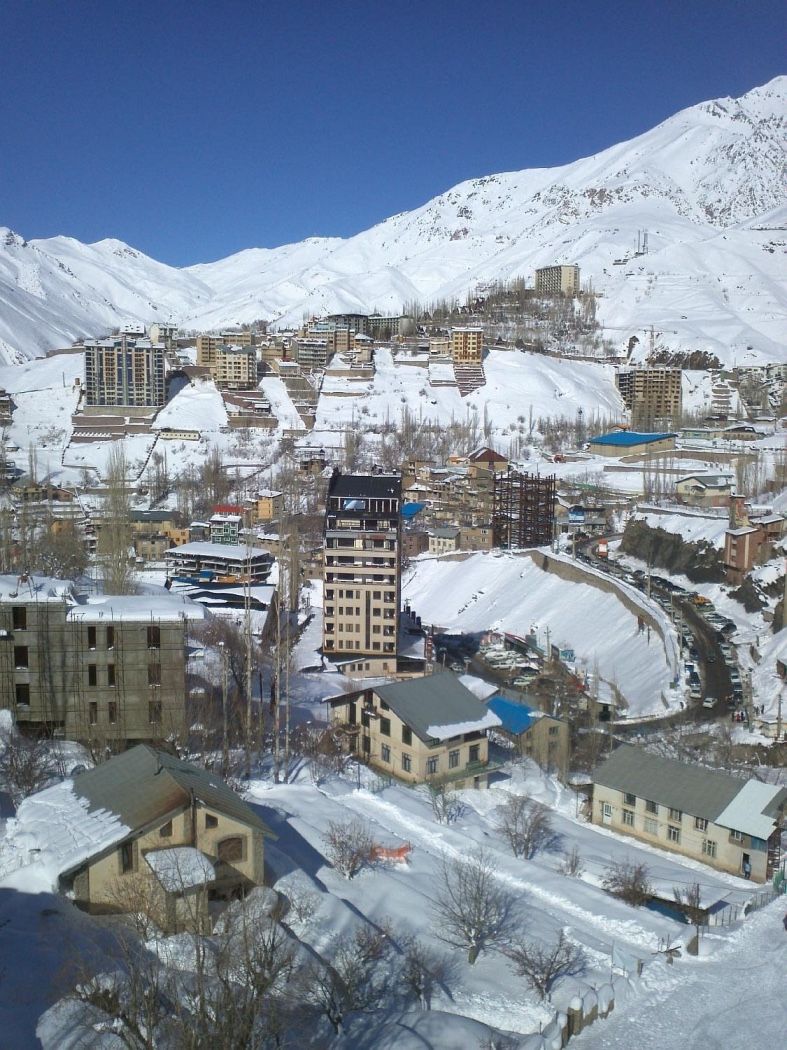
Tehran In 3 Days – The Perfect Itinerary for 2025
One of the frequently asked questions about Tehran would be “how many days in Tehran” to explore all the tourist attractions and go beyond ordinary to experience capital city like a local. As you read up through my listings of different or unique things to do in Tehran, there will be heaps of places to explore. However, here is the 3 day Tehran itinerary you may consider if you’re traveling soon!
Day 1 → Classic sighseeing
The morning is at your exploration, start it with a visit to the Crown Jewels Museum with its impressive collection of precious gems and dazzling works of art. Continue on to Sa’dabad Palace and the Museum of Reza Abbasi, named after the most famous miniaturist of the Safavid era. The museum, opened in 1977, exhibits artifacts dating back to prehistoric and Islamic periods, and is particularly rich in calligraphy.
The alternative would be to start with Golestan Palace and continue to the grand bazaar of Tehran, that alone takes more than 5 hours of your morning, end your tour with a perfect rice and Kebab at one of many classic restaurant at the Bazaar. If you follow this option, you can now head to north of Tehran and explore Sa’ad abad palace and its complex and end your day at Darband before taking a taxi back to your hotel.
Day 2 → Explore museums
This morning’s tour yourself and check out the impressive treasuries at National museum. This includes the Archaeological Museum with its fine collection of artifacts, including a stone capital of a winged lion from Susa, and a sixth century BC audience hall relief of Darius the Great recovered from the Treasury at Persepolis. The museum contains items that date back from the Sumerian Period (4500 BC) to the contemporary. Also, visit the Ethnological Museum, which houses unique wax works depicting a wide array of indigenous Iranian cultures.
Day 3 → Get to know the Persian carpets
You are in Iran and definitely can’t deny the art of Persian carpets. Do yourself a favor and head to visit the Carpet Museum with its superb collection of Persian rugs and carpets, and tour the Glass and Ceramic Museum, end your evening with a dinner at some of the quick grab and eat Falafel and Iranian Bandai sandwiches at south of Tehran.

An Unusual adventure Things to do in Tehran
You’ve done with all the tourist attractions in Tehran and now its time for an adventure things to do while in Tehran.
Expedition to Mt.Damavand Shaped like Mt Fuji, Mt Damavand (5671m), northeast of Tehran, is the highest mountain in the Middle East. Damavand has many mythological tales associated with it but in reality it is a dormant volcano that still belches out sulphuric fumes strong enough to kill unfortunate stray sheep. Its image is one of the most recognisable icons in Iran.
Most people who go to Damavand do so to climb the peak, and start by heading to the large, comfortable Polour Camp (2270m), built by the Iran Mountaineering Federation and the best place to acclimatise before attempting the south and west face routes. The BEST climbing season is from June to September, or May to October for experienced climbers.
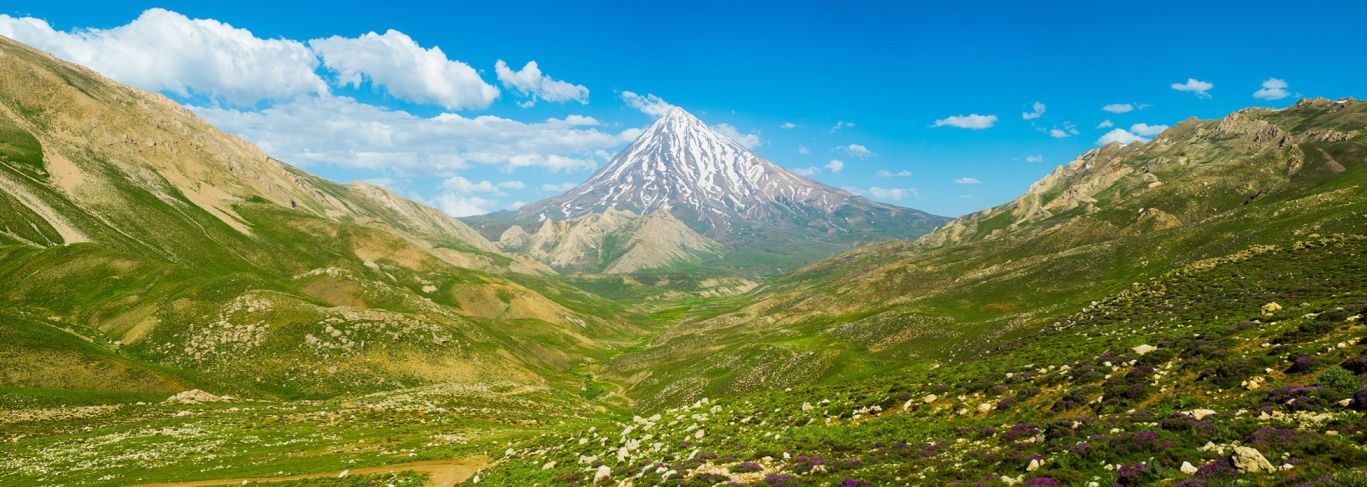
Where To Stay in Tehran?
There are plenty, if not over 1000’s, of places to stay in Tehran – a large selection of backpacker favored hostels & bed and breakfast hotels in busy downtown and the better quality 5 star properties in northern Tehran.
Note: The large big hotel names you see them anywhere else in the world are NOT yet appeared in Tehran and this is due to the sanction. Anyway, there are Iranian owned and operated alternatives to stay in. In addition, the best place to book your favorite hotel in Tehran would be through “Hostel world” or once in the Iran, download the local application called “Snap” and check and book up to your budget.
I certainly can’t recommend any place to stay since this post isn’t an affiliate one. Also, the world’s most popular apps “Booking” or “Agoda” as well as “AirBNB” are not active in Iran, again, for the obvious reason, the credit cards are disabled in Iran, so the apps as well
Essential → Where to Extend Your Visa In Tehran
What if I overstay my visa? Simply don’t as the visa extension nowadays in 2025 is simple & very straightforward. In almost all Major Iranian cities you are now able to get your tourist visa extended. Cities like Tehran, Esfahan, Shiraz, Mash’had, Tabriz, Yazd, Rasht and Bandar Abaas offer easy visa extension.
In Tehran, arrive as early as 7:30 a.m. (Monday to Thursday) to avoid crowds. Hand over your passport and two photographs, then receive an extension form to complete. Pay the visa extension fee (Euro 5-10), and collect your passport within 1-2 hours.
Visa extension address: Central department of immigration: Kooh-e Noor St, Shahid Motahari St, Tehran.
Recommended Reading about Tehran & Iran
Read your way through Iran and learn more about its culture, ancient history, people and the life. Here are few recommended reading about Both Iran and Tehran. in addition, if you’re backpacking in Iran, I suggest you to carry on a guide book, or just download it on your cell-phone.
J Boyle’s Persia: History and Heritage is the best book to buy for an overview of Iranian history, carpets, literature, painting, architecture and pottery.
Robert Byron’s *The Road to Oxiana* vividly observes and often humorously documents a slow journey from England to Afghanistan, including extended visits to Iran and Tehran.
Danziger’s Travels: Beyond Forbidden Frontiers is Nick Danziger’s account of his travels from Turkey to Hong Kong (including Iran) without much regard for tiresome formalities like visas, stamps or permits.
Freya Stark’s Beyond Euphrates and Valleys of the Assassins are classic tales from this redoubtable woman’s travels in the 1930s.
The Fifty Poems of Shams Din Mohammed Hafez represent the definitive work of the renowned poet commonly known as Hafez. It’s available at Hafez’s tomb in Shiraz
A Hull & N Barnard’s Persian Kilims gives the lowdown on Persian carpets.
0